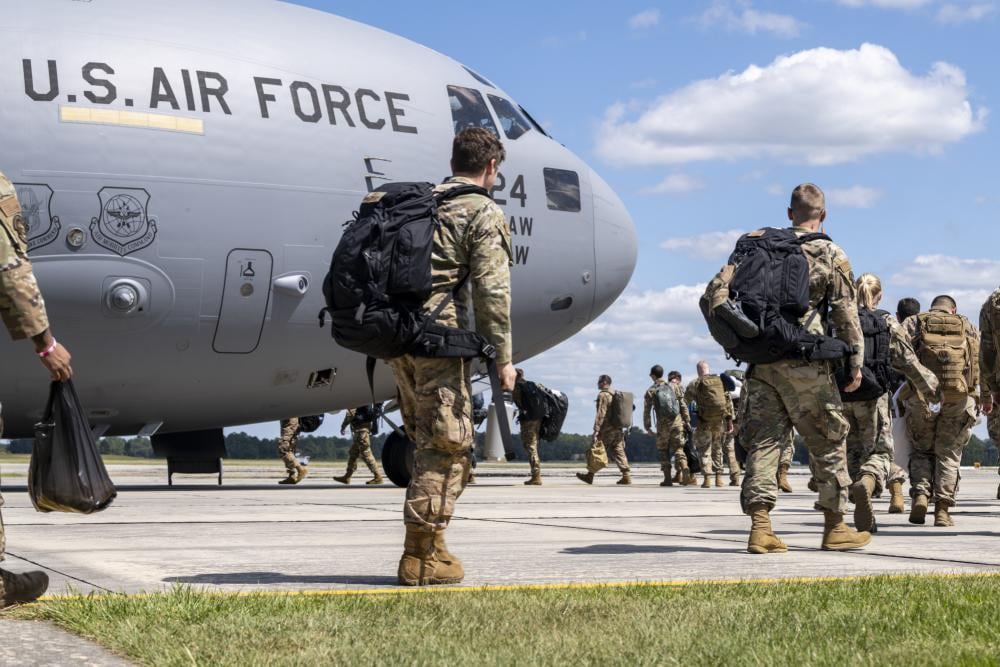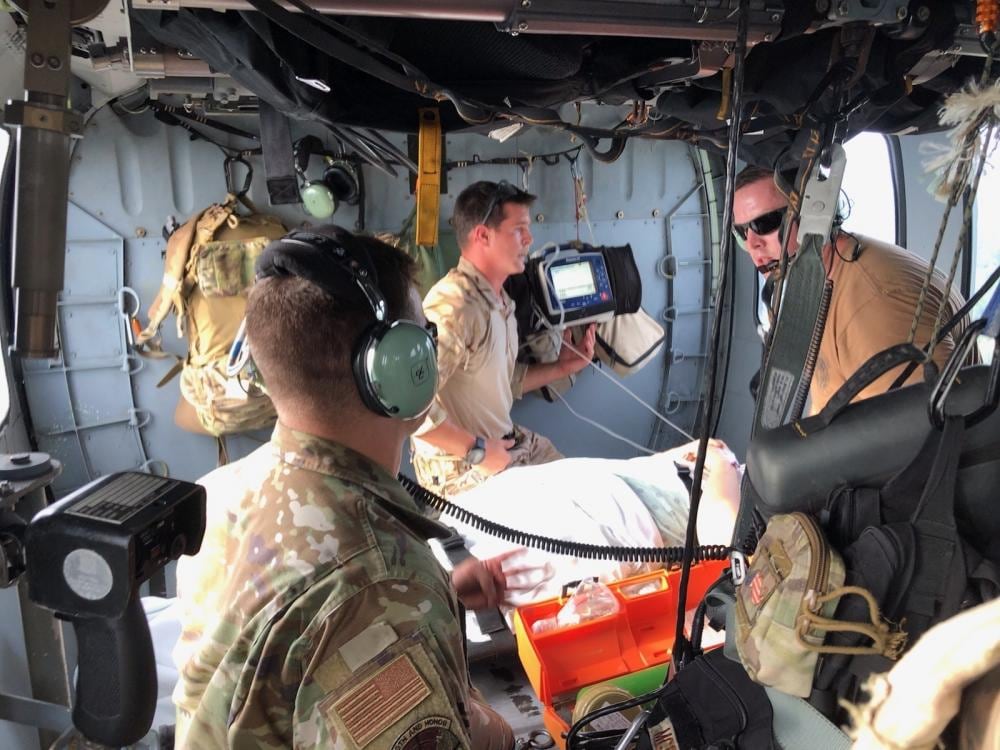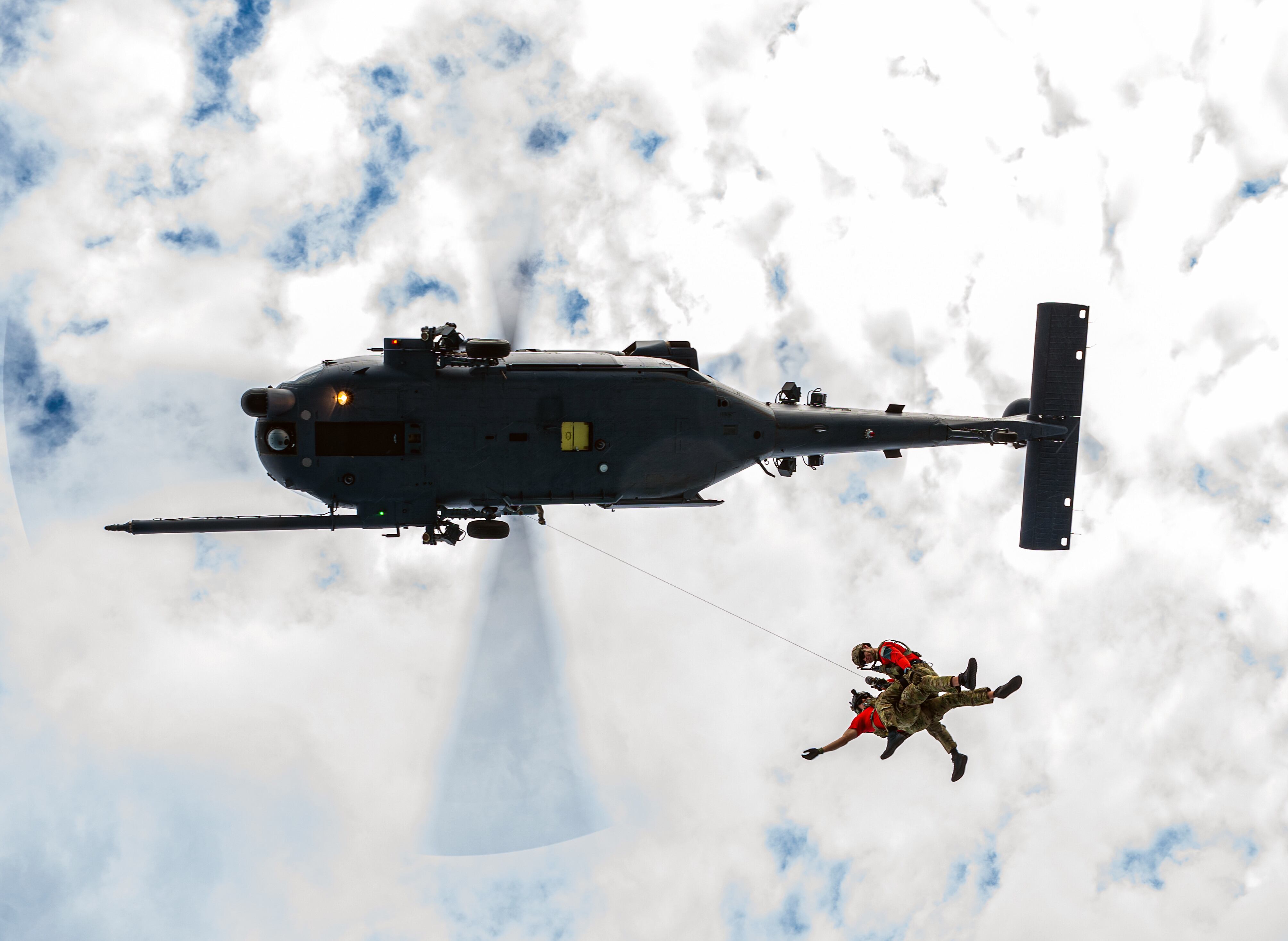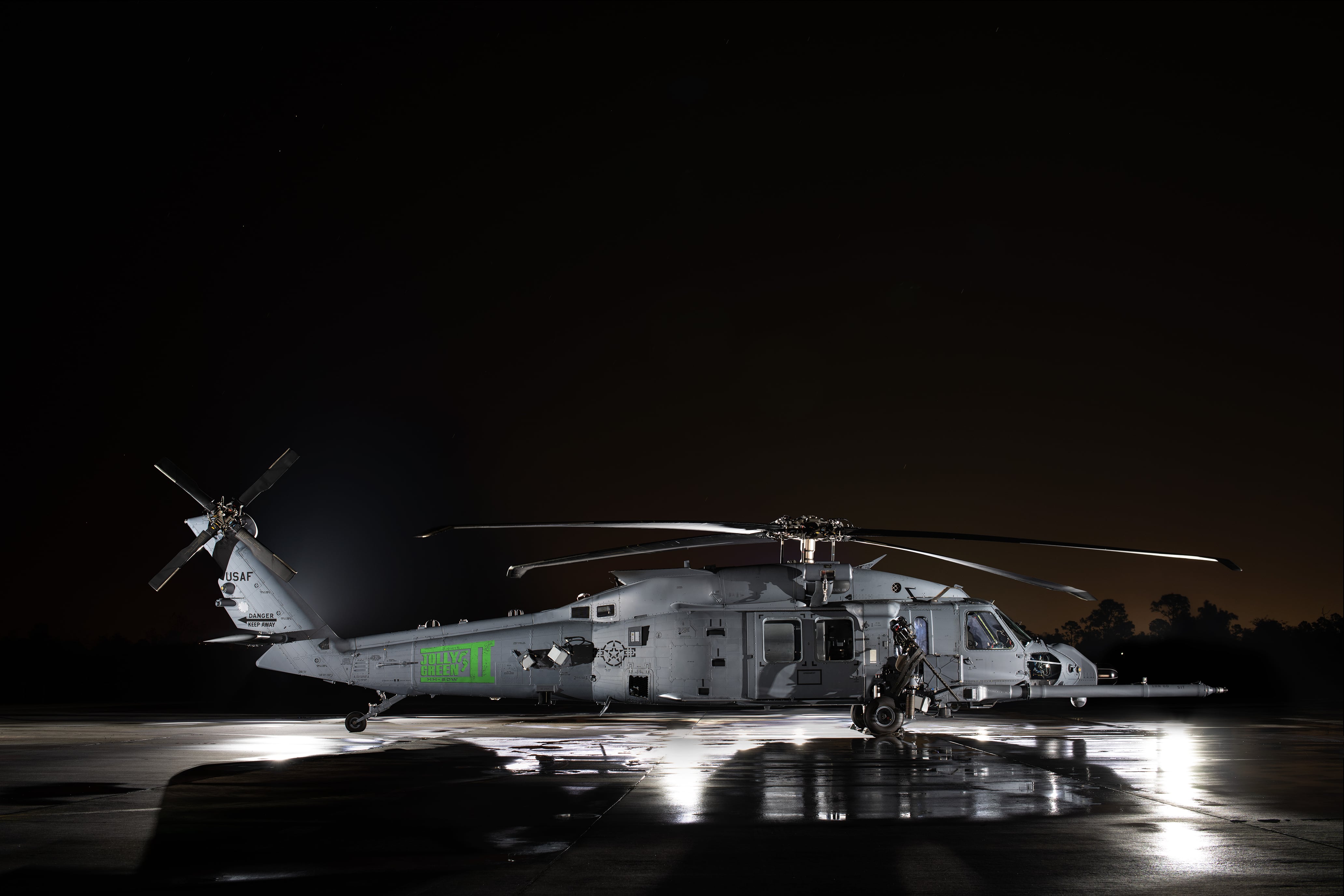The Air Force’s new HH-60W Jolly Green II combat search-and-rescue helicopter has deployed overseas for the first time, a milestone more than a decade in the making.
Airmen with the 347th Rescue Group at Moody Air Force Base, Georgia, headed out with the HH-60W on Sept. 24, though the Air Force has not said where they deployed or how long they might be gone.
“The future of [Air Force] rescue is secure, and our team is ready to recover anybody, anytime, anywhere, against any adversary,” 23rd Wing commander Col. Russell Cook said Wednesday in a post on Moody’s Facebook page.
Deployment is the latest of multiple achievements for the helicopter program in the last few months as the Air Force prepares to wind down the buy.
On Sept. 7, Moody airmen notched their first save in an HH-60W when they airlifted an airman from a hospital in Valdosta, Georgia, to another in Tampa, Florida. It’s unclear why he needed medical attention.

A helicopter from Moody was tapped to respond following a multi-hour training sortie, the service said. After a quick refueling and maintenance check, it headed out on its domestic mission with the call sign “Air Force Rescue 490.”
Dispatching the HH-60W took about 45 minutes — faster than usual for military rescues. It landed about 12 miles away on a soccer field in downtown Valdosta.
From there, three airmen — a flight doctor and two pararescuemen — from Moody’s 38th Rescue Squadron took an ambulance to South Georgia Medical Center. They picked up an airman from Moody’s 75th Fighter Generation Squadron, which manages A-10C Thunderbolt II attack planes, and loaded him onto the helicopter.
The next leg of about 200 miles proved a bumpy ride.
“Capt. John ‘Jack Sparrow’ O’Neill, Air Force Rescue 490 aircraft commander, said they were dodging bad weather the entire way to Tampa but made it there safely,” the Air Force said in a press release. “Air Force Rescue 490 landed at a soccer field in Tampa … where they were met by a Moffitt Magnolia Center ambulance.”

The rescue crew offloaded the hurt airman and headed back to Moody.
“The Air Force Rescue Coordination Center credited the 41st and 38th Rescue Squadron with one save,” the service said.
RELATED

Shortly after, the Air Force approved the HH-60W to fly basic combat missions while the fleet continues to mature. Reaching “initial operational capability” means that the Air Force now has the helicopters, supply chain and trained airmen to support a 30-day deployment of four aircraft anywhere in the world.
“It’s an exciting day for combat rescue,” said Maj. Gen. David Lyons, Air Combat Command’s operations director. “This declaration is the culmination of years of hard work and vision.”
The future of the Air Force’s combat rescue mission is in flux following the U.S. withdrawal from Afghanistan and the rise of military competition with China and Russia.
The service plans to buy 75 helicopters — all but 10 of which have been ordered from Lockheed Martin subsidiary Sikorsky — for $4.1 billion.
RELATED

The Jolly Green II fleet, named for the HH-3 helicopters flown during the Vietnam War, can fly faster and farther than its predecessor and better withstand threats. Moody was the first Air Force ops base to receive the new airframes in November 2020.
They are expected to replace an earlier Sikorsky airframe, the HH-60G Pave Hawk, at several active duty and Air National Guard installations around the world. Airmen have flown Pave Hawks since the early 1980s in conflicts and emergencies from Panama to Afghanistan to Japan.
Rachel Cohen is the editor of Air Force Times. She joined the publication as its senior reporter in March 2021. Her work has appeared in the Washington Post, the Frederick News-Post (Md.), Air and Space Forces Magazine, Inside Defense, Inside Health Policy and elsewhere.





